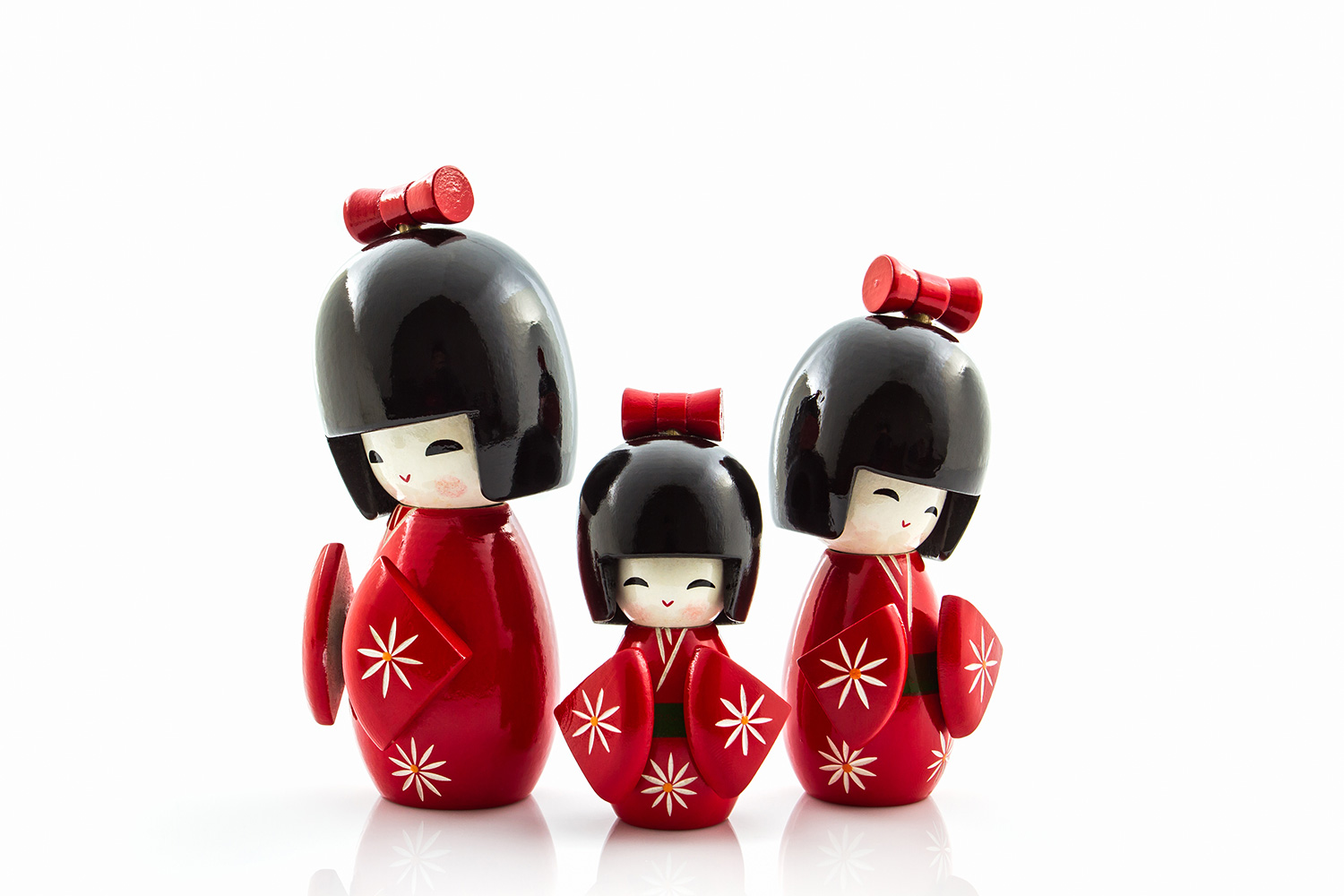

KOKESHI – TRADITIONAL JAPANESE WOODEN DOLLS
Kokeshi are wooden cylindrical figurines with characteristic big heads. Female figures have no arms, and their torsos are decorated with hand-dyed floral motifs. The faces of traditional kokeshi are marked only with a few simple lines. The figurines are made of various types of wood, depending on their specific properties – for instance the wood of plum trees gives the dolls a unique colour, while the Cornelian cherry tree – incredible quality and durability.
The story of kokeshi
The first kokeshi started to emerge at the beginning of the 19th century in the Tōhoku region. At the decline of the Edo period they were already popular as children’s toys and travel souvenirs. As mass production of children’s accessories developed, the hand-made kokeshi changed their function, becoming an element of Japanese folk tradition, appreciated more by art connoisseurs and collectors than by children, interested mostly in having fun. Available nowadays – in addition to figurines made traditionally – are serially produced kokeshi, which are a typical souvenir from Japan. Nevertheless, you can still find traditional craft workshops practising the Japanese ancient art, especially in the area of Tōhoku.
Japanese kokeshi
Hearing the word “kokeshi,” a Japanese usually thinks about one of the eleven traditional versions of kokeshi, connected with the eleven onsens of the Tōhoku region. When the areas surrounding Japanese hot springs – onsens – started to thrive as popular spas, kokeshi were to serve as souvenirs typical of a particular area. The original dolls were made in line with the guidelines passed down from generation to generation and as such they lie at the centre of the history of many Japanese families. Some of them have been tied to woodcraft for as many as five generations, and their subsequent followers – the ones most fervent and faithful to tradition – still make kokeshi in a way prescribed centuries ago.
Modern versions of Kokeshi
Nowadays, next to traditional kokeshi, known as dentō-kokeshi, we can find more contemporary versions of the figurines – shingata-kokeshi, which means “artistic” kokeshi. Young Japanese craftsmen increasingly often treat tradition as a starting point for their own artistic explorations, and give their figurines new, original forms.
The significance of kokeshi
Even though made of wood, the Japanese dolls are still tremendously popular among tourists and collectors, and in the minds of many Japanese they are a symbol of their tragic history and family drama. Over the centuries, a lot of myths and beliefs have emerged around the traditional figurines, with death of a child as a common denominator. The innocently looking figurines are considered by many as a symbol of death of unborn children or children killed just after birth. This is connected with the interpretation of the name ‘kokeshi’ as coming from the words ko (child) and keshi (removing or extinguishing). According to popular myths, parents commemorated the death of a child by preparing colourful wooden figurines. However, such practice is confirmed only in few sources, which fail to clearly state whether kokeshi originated as the symbolic memento or if they were later adapted for family rituals.
Today, commercial kokeshi can be found at almost every souvenir stand, and their contemporary image is often used in popular culture. The majority of them have little to do with the ancient wooden figurines. Not unlike many other Japanese traditions, the art of making wooden kokeshi with reverence is only practised by those artisans that are the most enamoured with national heritage. Kokeshi are also protected from oblivion and distortion in mass production by numerous museums that exhibit traditional figurines.














